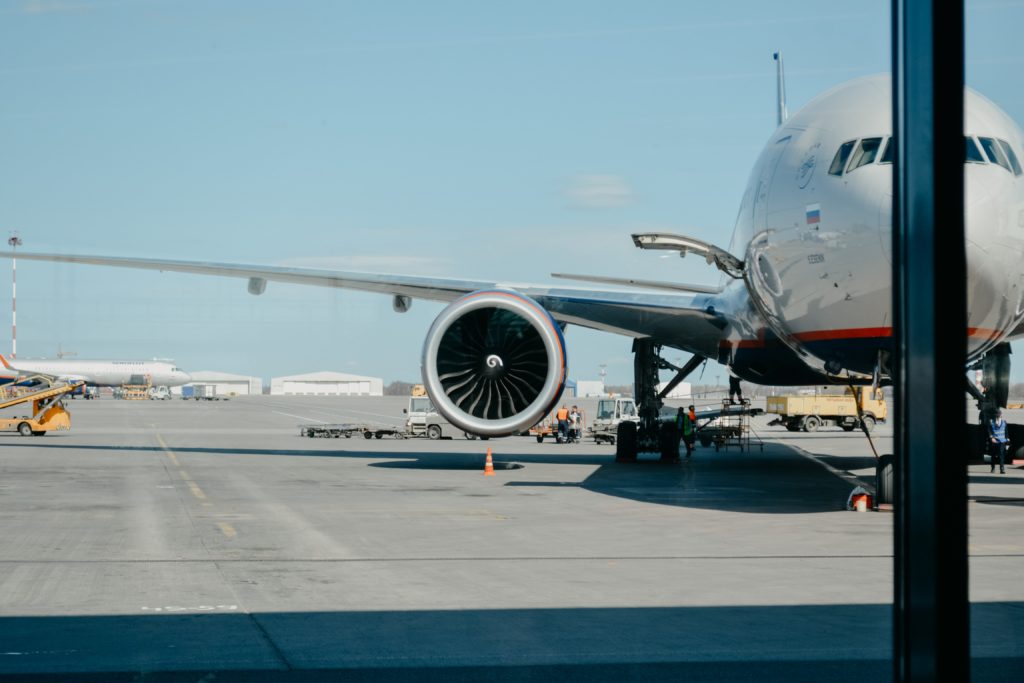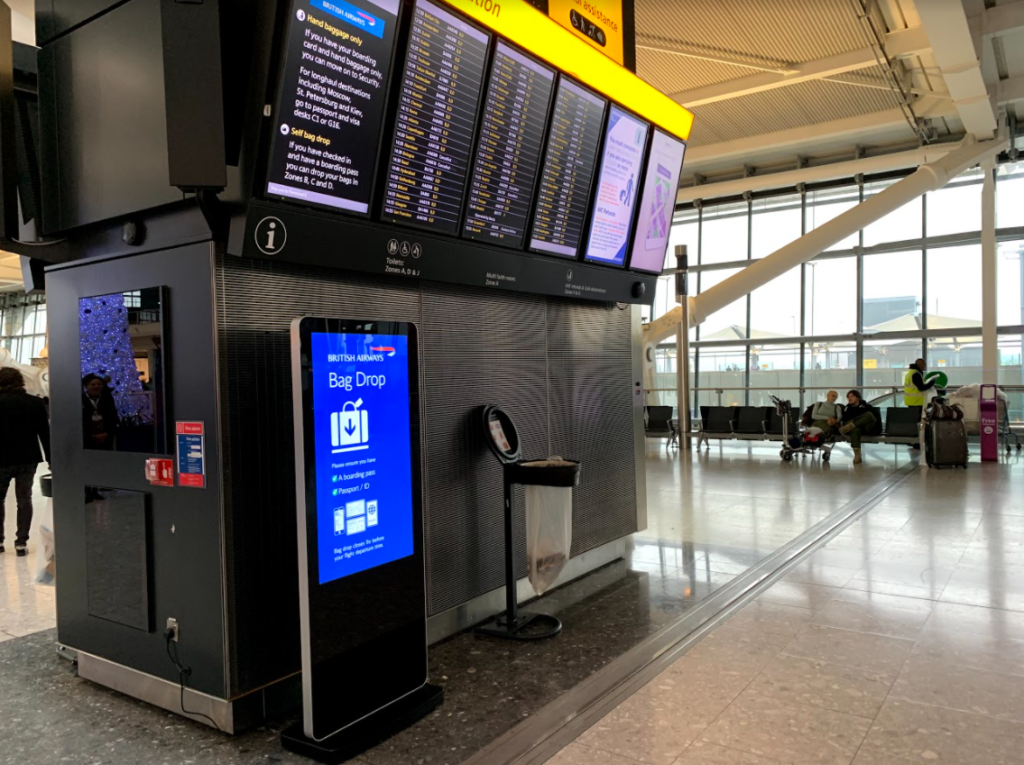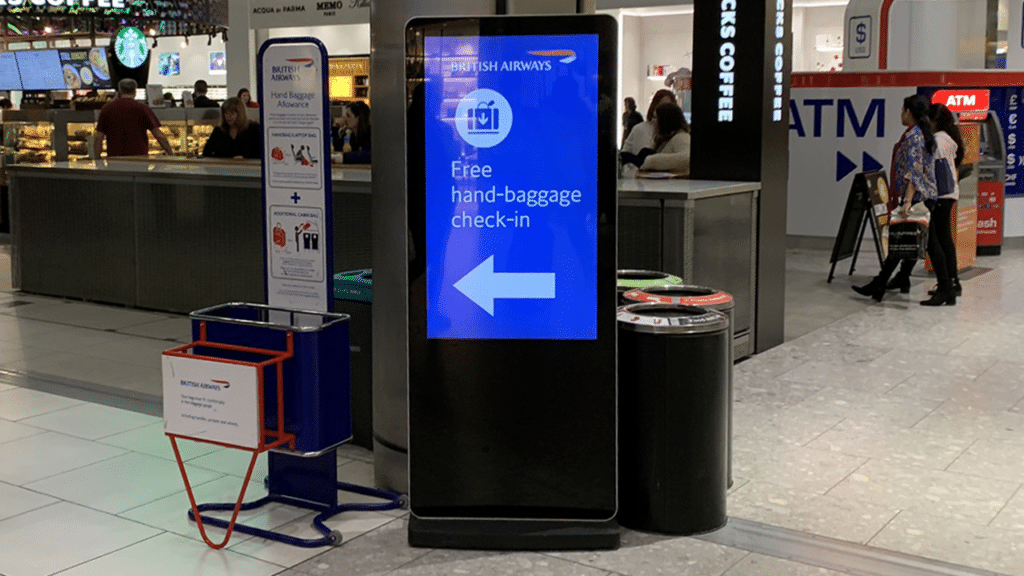There are fewer busier environments than an airport. For example, Heathrow airport alone saw 80.1 million jetsetters passing through its terminals in 2018 and a daily average of over 219,000 passengers a day. To satisfy their passengers, Airports have countless lounges, shops, restaurants, and in some cases gyms and spas. This is in addition to airport security, check-in, and boarding locations. The sheer amount of information that needs to be effectively communicated is mind-boggling. A challenge compounded by the fact communication needs to be in different languages, clear, and easily accessible. Enter digital signage for airports.
Airport Communications Grounded by Traditional Methods
A main challenge of airports and airlines is getting information out as fast as possible to their passengers. Whether it’s an urgent safety notice, a gate change, or severe weather warnings, information needs to reach passengers quickly to ensure a satisfactory experience. Until recently, airports have had to rely on traditional communication methods such as whiteboards, posters, or even going around to each individual passenger. For airports, this simply isn’t good enough…
Through digital screens powered by cloud-based software, airports can update their screens with information in seconds. This information can be triggered by third-party devices. For example, if wind speed reaches dangerous levels, content informing passengers of the wind speed changes can be triggered to display on-screen immediately.
Digital signage for airports is the ultimate platform and the only one capable of meeting the needs of airport managers and their passengers.

Enhancing Flight Procedure and Security
For many passengers, checking-in for their flight can be a very stressful part of their airport experience. Each airport and airline have varying procedures for boarding or luggage, and regulations are constantly changing for airport and passenger safety. In the 21st century, airport security has drastically increased. This has often lead to often an intimidating and confusing process for those who don’t fly regularly.
Digital signage for airports can help remove any stress through clearly signposting this information to travellers. This can be a great aid to airport staff by advising on luggage requirements and coordinating security lines.
Each info desk enquiry from a passenger that can be answered through digital signage, will save your airport staff time.

Digital Wayfinding for Airports
In most cases, average travelers only visit an airport once or twice a year, and when they do, it’s often to go to a foreign airport they’ve never visited. Efficient wayfinding is critical to help get these passengers from A to B with minimal stress. A passenger’s airport experience will be molded by how easily they could make it to the correct gate.
Digital signage for airports offers a superior solution through digital wayfinding. Unlike static maps, digital screens can offer animated directions that more effectively map out routes. The introduction of touch-screen wayfinding kiosks is another possibility for airports. These kiosks allow travelers to search for their particular gate, even flight, or alternatively receive directions to recreational destinations like shops and restaurants. The digital wayfinding system will then serve up a route with tailored instructions showing the user exactly where they need to go.
Being able to easily navigate the airport can be a huge factor in a passenger having a good airport experience. In addition to this, passengers are self-sufficient and are less likely to need to ask other airport staff where they need to go. Not only does this enhance the passenger’s experience, but it also saves time for your staff.

Multi-lingual Content and Advertising
The modern-day airport has started to take shape of a giant shopping centre with tens of restaurants, bars, shops, and other facilities such as gyms spas. All these boutique and branded retailers need to advertise as they would anywhere else. The only difference is their customers are made up of an array of nationalities – all speaking different languages. Digital signage for airports caters to this need in a way that traditional signage cannot. Adverts and offers can be scrolled through in different languages or translated following interaction on a touch-screen. With so many household-name brands at an airport, airport owners will be spoiled for choice when it comes to selecting paying advertisers. The competition over footfall only escalates the value of advertising creating airports a significant potential income in sponsorship revenue.
Extending the Reach of Airport Social Media
Social media has quickly consumed and connected the planet with over 4.2 billion global users and airports are no exception. From small businesses to global corporations, all organisations are seeing the benefits of social media and are starting to make their mark.
One main goal of social media marketers is increasing their engagement and follower count on their social media channels. Achieving these goals is often done on the platforms themselves through social media marketing or outreach. However, organisations are looking for more ways outside the channels to attract new audiences, airports are no exception.
Social media on digital signage is providing airports a new way to engage with passengers and attract new followers. Digital displays can show live social media feeds that follow a specific hashtag or account. Other content can encourage users to post on their platform using a set hashtag to display their post on the screen. For example, this could be encouraging passengers to share their holiday pictures under a certain hashtag. When a customer posts these, the screen will pull in the live posts. Not only is this increasing social media engagement, but it’s also showing other passengers the other great holidays made possible through your airport.

Boosting Staff Internal Communication for Airports
So far in this blog we’ve mostly focused on the customer-facing side of airport operations. But what about airport staff, is digital signage helping them too? The answer is 100% yes. Digital signage is a popular tool for enhancing internal communications for employees in a multitude of industries, airports are no exception.
Digital displays can be placed in break-rooms or employee access-only areas to display important updates, company messages, live data, or alerts. This helps massively improve the operations of your airport as your employees are kept more informed and in the loop. For example, if the airport is planning on moving the check-in desks, this information can be placed on screens to inform staff of the changes and get them prepared.
Digital signage for airports is also a great way to motivate staff. A screen can act as a digital dashboard, showing live metrics and targets. For example, if customer satisfaction score is important to your employees this can be displayed live, in real-time. If the score is too low, employees know they need to put in a little more effort, if it’s high, they need to keep on doing what they are doing. It’s a great way to ensure your airport is operating the best it can.
If you have any questions regarding digital signage for airports, speak to an expert today. Call our friendly team on 02380 981110 or Email info@troudigital.com for a no-obligation consultation. Alternatively, click the button below.
